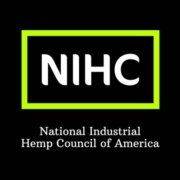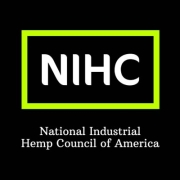NIHC Applauds NIST’s New Hemp Reference Material to Enhance Hemp Testing Across the United States
WASHINGTON, Jan 17, 2025— The National Industrial Hemp Council (NIHC) celebrated a landmark achievement in the hemp industry with the announcement from the National Institute of Standards and Technology (NIST) regarding its launch of a new hemp reference material (RM). This innovative tool is poised to play a crucial role in enhancing the accuracy and reliability of hemp testing across the United States, tackling one of the core challenges faced by farmers, processors, and consumers alike. With standardized reference materials now available, stakeholders in the hemp sector can expect a marked improvement in testing procedures, which will ultimately support the expansion and credibility of hemp-derived products.
The introduction of this reference material signifies a commitment to evidence-based practices and the establishment of rigorous scientific standards within the industry. As hemp continues to gain traction in various markets—from textiles to paper to food products—it becomes imperative that all involved can ensure quality and compliance through consistent testing protocols. By partnering with NIST, the NIHC is championing an approach that prioritizes transparency and trust, elements that are essential for long-term success in the burgeoning hemp sector. This development not only reinforces the potential benefits of industrial hemp but also sets a precedent for other emerging agricultural industries that may soon seek similar scientific support.
“We are thrilled by NIST’s introduction of this hemp reference material, which is a game-changer for the hemp testing industry,” said NIHC President & CEO Patrick Atagi. “Accurate testing is essential to ensuring the safety and success of hemp products, from farming to manufacturing. This new benchmark sets a clear quality standard that will foster consumer confidence and enable hemp to thrive as a sustainable and reliable commodity in both the U.S. and global markets.”
From seed to final manufacturing processes, the introduction of this reference material provides a reliable standard that all players in the hemp supply chain can adhere to, optimizing quality assurance practices across the industry. NIST provides food safety reference material and analytics that support the United States Department of Agriculture in efforts to ensure consumer safety, enhance economic security, and improve the standard of living for all Americans.
This benchmark not only supports safety but also fosters consumer confidence, which is vital for the hemp market’s growth. As the hemp industry continues to expand in both North America and across the globe, having a recognized standard for testing will help mitigate risks, enhance product reliability, and foster economic development. In a sector that has faced challenges related to regulation and quality control, NIST’s initiative is a key step toward establishing hemp as a sustainable, trusted commodity crop. With enhanced testing protocols, consumers can enjoy peace of mind regarding the products they choose, ultimately contributing to the growth and acceptance of hemp across various applications, from wellness products including hemp seed oil to industrial materials using hemp shives and fiber.
The NIST Reference Material (RM) plays a pivotal role in enhancing the reliability and accuracy of hemp testing laboratories. By providing a traceable and impartial sample, the NIST RM allows laboratories to accurately measure key compounds, such as cannabinoids, mycotoxins, residual solvents, and heavy metals, that are critical in assessing the quality and safety of hemp products. This reference material is essential not only for validating testing protocols but also for ensuring consistency and comparability across different testing facilities. As the hemp industry continues to grow, having a standardized reference point becomes increasingly important for maintaining quality control and regulatory compliance.
Accurate testing protocols supported by the NIST RM benefit various stakeholders in the hemp supply chain—including farmers, manufacturers, law enforcement officials, and consumers. For hemp farmers, precise testing can prevent substantial crop losses that may occur due to incorrect evaluations of their harvest. For manufacturers, it ensures that products meet safety standards and regulations, ultimately protecting brand integrity and consumer trust. Furthermore, law enforcement agencies can better regulate the market, helping to eliminate harmful products and ensuring public safety. For consumers, the assurance that hemp products have been thoroughly tested minimizes the risk of exposure to dangerous contaminants. Overall, the NIST RM is an invaluable tool that contributes data to a safer and more reliable hemp industry.
“NIHC welcomes the NIST reference materials as an opportunity for hemp laboratories to validate the accuracy of their testing methods and procedures, and to align them with an internationally recognized standards body,” said NIHC Executive Vice President of NIHC Verify Lakshmy Mahon. “This is a critical step toward creating consistency and ensuring that hemp products meet the highest safety and quality standards, ultimately benefiting everyone in the hemp supply chain.”
The adoption of NIST reference materials represents a significant stride towards uniformity in the hemp supply chain. As Mahon emphasizes, this initiative is critical for creating consistency in the quality and safety of hemp products. In an industry that is rapidly evolving and often marred by regulatory uncertainties, having a common standard helps mitigate discrepancies and enhances the reliability of products reaching consumers. Ultimately, this effort benefits all stakeholders within the hemp value chain, from farmers and processors to distributors and end-users. By setting a foundation of high standards and rigorous testing protocols, the NIHC aims to foster a healthier, safer market environment, ensuring that hemp products meet stringent safety and quality criteria, thereby gaining consumer confidence and supporting industry growth.
The NIHC Verify program represents a significant advancement in the hemp industry, working in partnership with the American Association for Laboratory Accreditation (A2LA) to provide a robust accreditation framework for hemp laboratories. By adhering to the ISO/IEC 17025:2017 standards, the Verify program sets a benchmark for laboratory practices that enhances quality, transparency, and consistency across the board. This initiative is particularly crucial for the economic growth of the hemp market. A reliable testing infrastructure is necessary to ensure consumer safety. By offering a systematic approach to accreditation, the NIHC Verify program enables laboratories to demonstrate their commitment to excellence, instilling greater trust in the data and results they generate.
One of the key strengths of the NIHC Verify program is its integration with the National Institute of Standards and Technology (NIST) Reference Materials (RM). This collaboration allows for the implementation of precise and standardized testing methods, further bolstering confidence in hemp testing protocols. By ensuring that laboratories comply with rigorous standards, the program not only protects public health but also strengthens the commercial hemp trade by providing consumers and businesses with reliable information about hemp products. Ultimately, the NIHC Verify program serves as a cornerstone for fostering credibility in the hemp industry, promoting best practices that benefit consumers and producers alike.
Atagi explained that as the hemp industry continues to grow, initiatives like the NIST RM and the NIHC Verify program are vital to ensuring the sustainability and success of the growing industrial hemp sector. “By offering reliable, science-based tools, these efforts create a more trustworthy hemp market, reducing the risk of crop seizures, consumer health issues and regulatory barriers,” he said. “With an eye to the future, the NIHC remains dedicated to empowering the hemp industry with the resources, advocacy and partnerships it needs to thrive.
If you are a hemp testing laboratory interested in becoming an NIHC Verify program member, please visit www.NIHCOA.com
###
About the National Industrial Hemp Council:
The National Industrial Hemp Council (NIHC) is dedicated to advancing the U.S. hemp industry by promoting sustainable agricultural practices, advocating for a robust regulatory framework, and fostering innovation within the sector. NIHC is a leader in supporting hemp producers, businesses, and consumers by providing a platform for collaboration, education, and global trade.


















